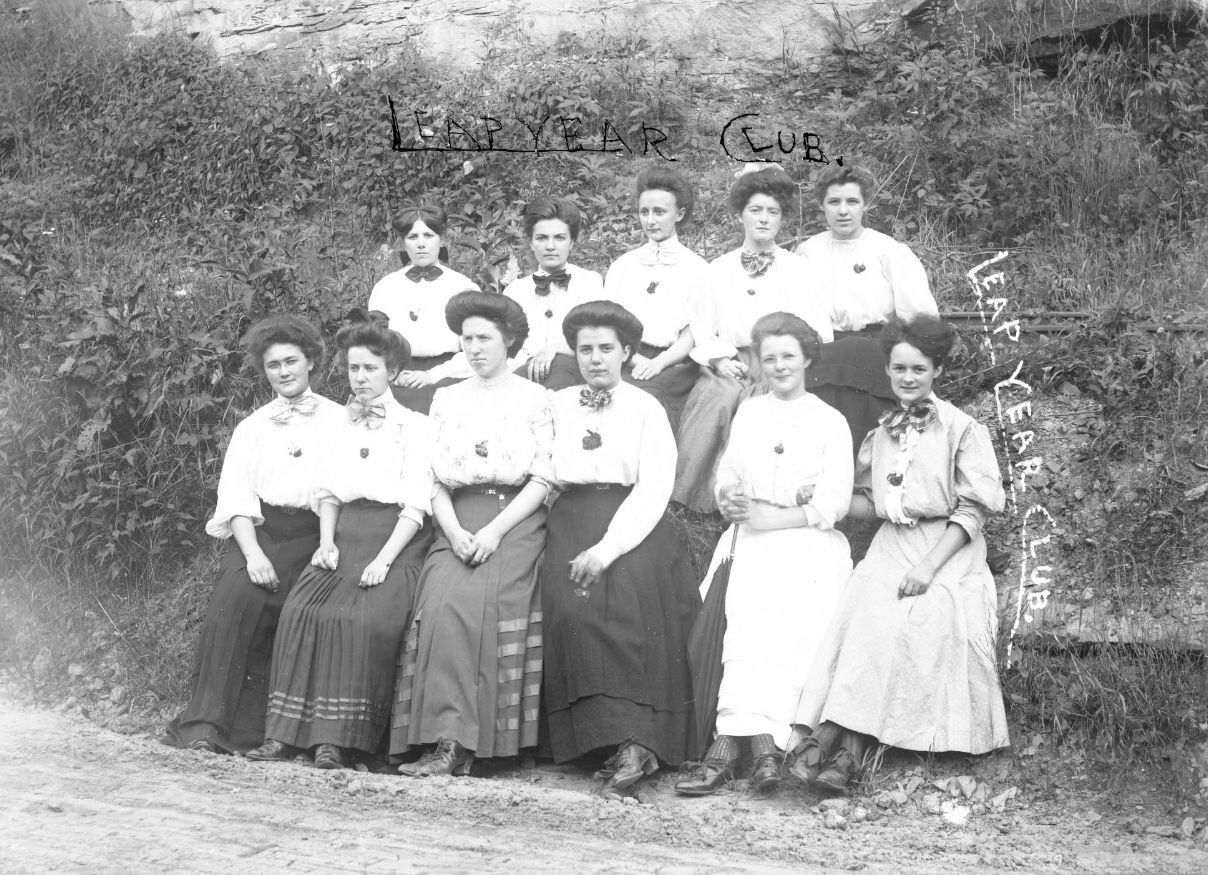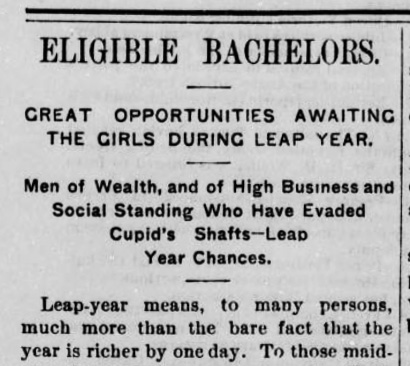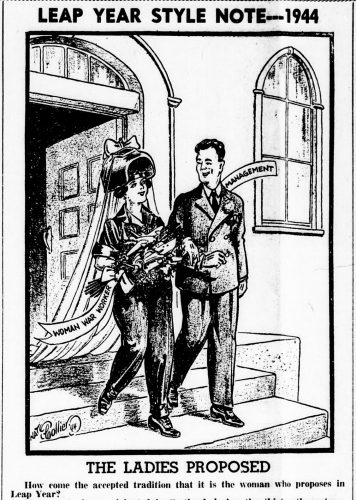“Until Leap Year Gives It One Day More”: February 29th… Leap Day!

Tomorrow is February 29, 2020. As we all know from the Mother Goose rhyme in the title of this piece, February typically consists of 28 days but, because the Earth’s orbit around the sun takes 365.25 days (kind of), in every fourth year (except sometimes not) an additional day is added at the end of February.
First, yes, “except sometimes not” is accurate. Leap Day actually happens in every year that is divisible by four with the exception of those century years that are not also divisible by 400. This means that the year 2000 was a leap year but the years 1700, 1800, and 1900 were not, and 2100, 2200, and 2300 will not be, either. Confusing, yes, but the Lebanon Western Star of Lebanon, Ohio, did the math for us on December 5, 1895, in article entitled “A Leap Year Skip.” Above, we stated that the Earth’s orbit around the sun takes 365.25 days but, in reality, it takes 365 days, five hours, 48 minutes and 46 seconds, which means that every four years we are counting almost 45 minutes too many (or eighteen hours, 44 minutes and 56 seconds every 100 years). By skipping Leap Day in those century years that are not divisible by 400, we correct for this discrepancy.

Leap Day is more than confusing math, however; it’s long been celebrated as a day for turning tradition on its ear. For example, 13th-century Scottish tradition dictated that, on February 29th, women could propose marriage to men; if the man refused, he was forced to pay a penalty. In the UK this tradition is, if not widely celebrated, still observed today, with some vendors offering specials to women who plan to propose to their boyfriends. In the United States, however, its popularity peaked in the 19th century. On January 13, 1888, an issue of the Chillicothe Advertiser published an article entitled “Eligible Bachelors – Great Opportunities Awaiting the Girls During Leap Year” (on the front page, no less) and then proceeded to assure young women who fear that they are “’sufficiently decayed’ to be laid away on the shelf that their answer may very well be proposing to a man of means on Leap Day; young women with boyfriends who may never “find courage to do the deed” were encouraged to take heart, as well. “The Privilege of either proposing herself, or, at least, of assisting her diffident lover on his way, is one that comes to the fairer sex but once in four years.” The paper then goes on to “present several hundred thousand dollars [sic] worth of eligible bachelors to the dear girls” and lists approximately 50 unmarried men for the single ladies’ consideration. Many of the listings appear to be tongue-in-cheek: Newt Offutt is described as having a head that has “grown through his hair” and Ellywynn S. Robinson “should receive the especial attention of the ladies… though he has a heart of iron and is mysterious enough to be a detective.”

By the early decades of the 20th century, Americans were pushing back against the tradition. The January 4, 1924, issue of the Delaware Journal-Herald featured a short piece on page 6 that stated “woman’s right to propose marriage… should be accorded to her in fact, not only during leap year, but at all times.” Via Chronicling America, we can see that twenty years later, on February 10, 1944, the Potters Herald of East Liverpool, Ohio, had an interesting take on the tradition, saying that “the women of America, however, waited neither for government decree nor for traditional Leap Year to propose wedding themselves to industry when our country was imperiled,” pointing to the women’s war effort during WWII. It goes on to say, though, that “the great majority of war-working women… will resume their usual utilities and their feminine frills…” once the war is over. One assumes that will mean only being so bold as to propose to a man on February 29th.
There is no question that some Ohio Memory blog readers are wholly uninterested in proposing marriage on Leap Day. Modern readers, however, might consider Leap Day as being less about the marriage proposal itself and more about doing something out-of-the-norm, or challenging gender constraints, or just being bold or daring. Define “bold” and “daring” for yourself and do something unusual this February 29th. Make it a Leap Day to remember!
On a completely different subject, we at Ohio Memory mourn the loss of NASA mathematician Katherine Johnson, who died Monday, February 24th, at the age of 101. Mrs. Johnson was featured in the 2016 book Hidden Figures, and in the movie of the same name. In 2017, Ohio Memory published a blog post about Johnson and her colleague, Mary Jackson (1921-2005), which you may read here. Johnson was a trailblazer who made astounding contributions to the aerospace field and she will be missed.
Thank you to Shannon Kupfer-Trausch, Digital Initiatives Librarian at theState Library of Ohio, for this week’s post!
Ohio Memory is celebrating 20 years! Visit our blog all year long to learn more about our program, partners and collections.



Leave a Reply
You must be logged in to post a comment.